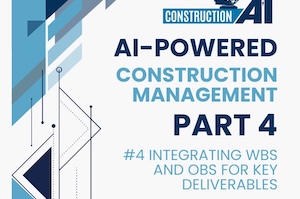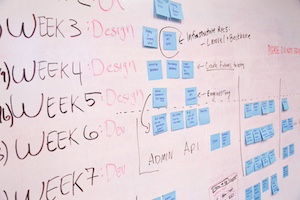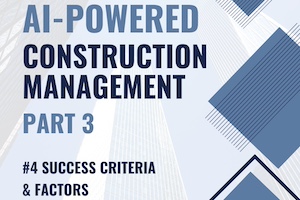Panelists at the AI + Digital Excellence in Construction virtual summit last month (July) told attendees that artificial intelligence (AI) and other technologies are beginning to drive some construction projects directly and proactively rather than lingering on the sidelines as they have mainly in the past.
Stephen Poppe, digital construction director at VIATechnik, says construction projects must have a prominent digital component as technology is shifting to being a driver rather than a side piece.
At the same time, “Technology is spilling into broader discussions" across more departments at construction firms as companies look for ways to leverage it to spur innovation, added Travis Johnston, director of construction technologies at XL Construction. Innovators and tech-friendly personnel are driving this "need for change," Johnston stressed.
But he also warned attendees not to become bedazzled by technology and shiny objects just for their own sake. “Define processes [first], then find the technology tools” to help achieve those aims, Johnston said.
While larger construction companies tend to lead the way—fueled in part by bigger budgets and larger pools of personnel—panelists urged smaller firms not to be left behind or feel intimidated about approaching AI.
"Big companies have more money, but they have the same problems as smaller firms," Johnston said. He advised smaller construction companies to look deeply at how they operate with an eye on exposing inefficiencies.
Like bigger shops, small construction operations must “have the basics right first [in order] to maximize tech,” agreed Poppe.
Johnston advised smaller firms to tap into the vast network of vendors to explore new technologies. "Use third parties to start small and find value" for your operation.
Citing drones as a good example, Nate Fuller, founder at Placer Solutions, advocated using vendors and other partners to "kick the tires" and see if a given technology helps your firm address a given problem.
As Fuller acknowledged, there were unique barriers to introducing new technologies into construction;
Alicia Lopes, chief innovation officer at Flatiron, agreed: "We are laggards but catching up" to other industries in bringing technology into operations. She added that there is an attitude of "We have our ways of doing things," and noted that the industry must fight that stubborn, stale mindset.
One challenge facing the construction industry is some people's reluctance to admit they need help understanding AI. "People are intimidated by technology but don't want to admit it," Johnston said. Panelists suggested that open communication and education can help address those concerns.
The firms that will ultimately best succeed in leveraging AI are those “driven by a culture around innovation,” suggested Poppe.
Finally, panelists addressed the best ways to assess how a new technology is working—or not. Traditional return-on-investment (ROI) metrics may not tell the whole story, said Fuller. His suggestion? Listen to those working in the field. Their gut reaction about whether something is adding value or just getting in the way might be a better way to evaluate new technologies.
 Michael Causey is a print and broadcast journalist who has covered many fields across several decades, including technology and edata integrity.
Michael Causey is a print and broadcast journalist who has covered many fields across several decades, including technology and edata integrity.










